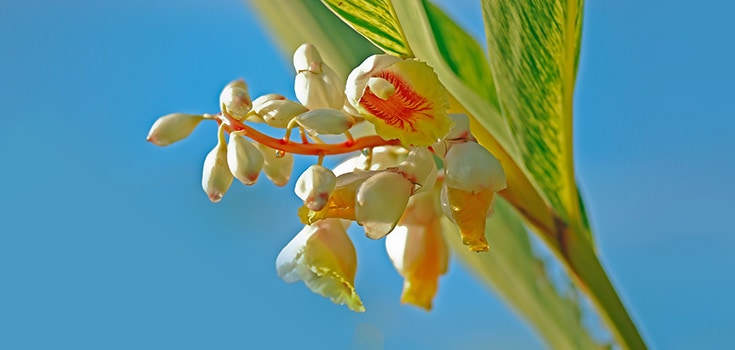Alpinia Zerumbet: Research Confirms the Benefits of this Traditional Medicinal Plant

Alpinia zerumbet, a tropical perennial plant native to eastern Asia and part of the ginger family, has a long history of use as a medicinal plant in Asia and South and Central America. But this plant has only recently caught the attention of the academic medical community for its potent antioxidant and hypotensive properties.
Alpinia Zerumbet and Healing Properties
Also known as light galanga, pink porcelain lily, shell flower, shell ginger, variegated ginger, butterfly ginger, yàn shanjiang in Chinese, getto in Japanese, and Sannin in the local dialect of Okinawa, the leaves and the extracted oils of the plant have long been used in Asia to relieve fevers and malaria, as well as to serve as a general health tonic. It is also used in South and Central America as a diuretic, antihypertensive, and antiulcerogenic.
Okinawa, Japan, whose population is frequently cited as ‘the healthiest on earth,’ boasts an impressively low incidence of cardiovascular disease, stroke and cancer. Here, the leaves of Alpinia Zerumbet are consumed regularly, very commonly used to wrap rice dumplings and decocted into teas. As is true of many traditional medicines, most of the people who consume Sannin have not researched or intensively studied the plant, but are somewhat aware of its general benefits, as a part of their culture.
Now, modern research has confirmed hypotensive and antioxidant activity in the leaves and rhizomes and extracts of the plant. It all comes together to show its potential benefits for diabetics, patients with atherosclerosis, and a wide range of skin diseases.
While A. zerumbet is not yet commonly sold as a food item or supplement in the U.S., it’s not difficult to grow. It requires a rather warm climate to grow outside (recommended zones in the U.S. vary from 7-12), but it can be successfully cultivated as a houseplant anywhere with bright lights and humidity. Although it grows up to ten feet in tropical climates, it generally peaks at a more manageable 3 or 4 feet indoors. As an added bonus to its health benefits, beginning in its second year, Alpinia zerumbet produces beautiful shell shaped pink or white flowers.
Given the numerous health benefits of ginger, it is not surprising to see this plant to possess so many positive attributes.
Additional Sources:
Medicinal Plant Images Database: Alpinia zerumbet

Turmeric (Ginger species) along with other Ginger species is one of the fresh Herbs we use for Luk Pra Kop, a Melange of Thai Herbs we apply for our Clients suffering from Head, Neck, Shoulder, Back, Joint, Muscle, Tendon, other Pain.
Our treatments are very effective and generally after a few visits show substantial improvements and or reversal of painful conditions for various ailments.
We use only fresh sourced, Thai Herbs which have superior healing power versus dried ones.
We also teach proper posture when sitting and standing as well as the proper way to pick up heavy objects.